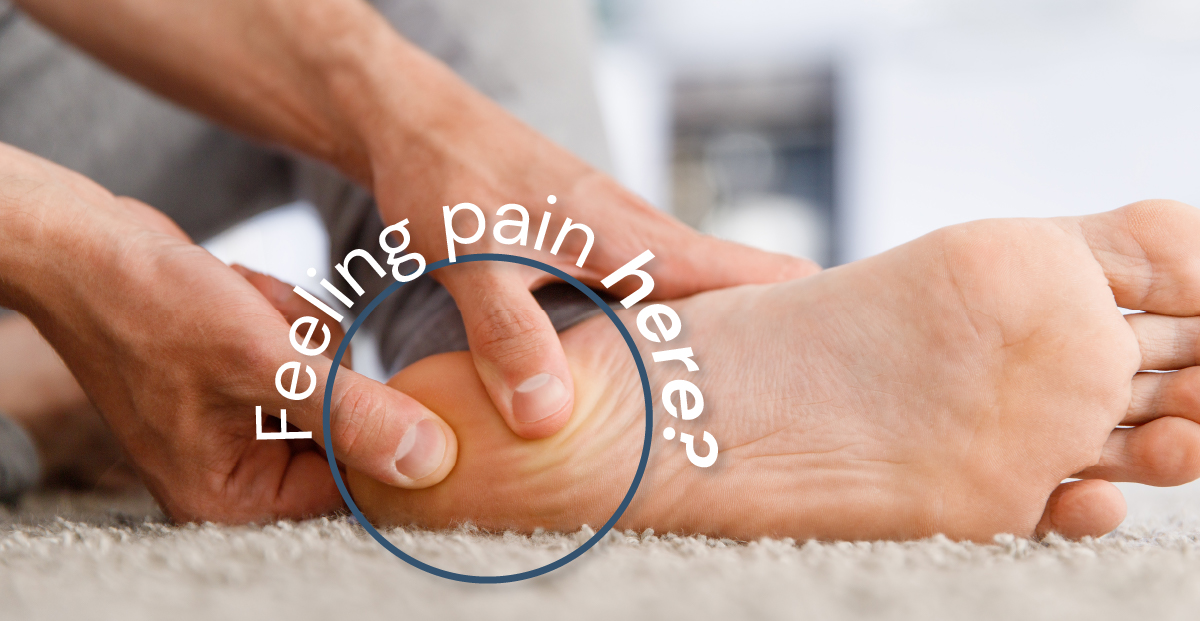
May 1, 2023
Put Your Best Foot Forward With These Tips From a Specialist
You’re probably no stranger to foot pain. Whether you’re on your feet all day for work or have suffered from a foot injury, heel pain is common, and most people will experience it temporarily throughout their lives. Some heel pain, however, is more than just momentary discomfort from long hours on your feet. About two million people in the U.S. suffer from plantar fasciitis, a condition that stems from inflammation in the heel. Here’s what you need to know about plantar fasciitis during Foot Health Awareness Month.
What Is Plantar Fasciitis?
Plantar fasciitis is a condition that involves the inflammation of a thick band of tissue that runs through the bottom of the foot and connects the heel bone to the toes. Some of the most common symptoms include stabbing pain. Typically, those who suffer from plantar fasciitis notice a decrease in pain the more they move, but symptoms might return after standing for long periods of time. Board certified podiatric surgery specialist Dr. James Townson has more than 10 years of experience treating patients who suffer from foot pain.

“The pain is usually most severe when standing after sitting for a long period of time, especially in the morning,” explains Dr. Townson. “This is referred to as post-static dyskinesia.”
What Causes Plantar Fasciitis?
Plantar fasciitis stems from the thin ligament called the plantar fascia, which runs along the bottom of the foot. This ligament is designed to absorb pressure from walking, running or other types of movement. When too much pressure is applied to the ligament, it can become torn or injured—this injury might lead to inflammation associated with plantar fasciitis and subsequent heel pain.
“I most often see plantar fasciitis after an injury or a long day in an improper shoe,” says Dr. Townson. “The ligament gets overstretched and pulls from the heel bone slightly. That night, while you are sleeping, the ligament is trying to heal, but as soon as you step down the following morning you re-pull the ligament because it didn’t heal fully. This is the repetitive cycle that results in the condition.”
Remedies for Plantar Fasciitis
Dr. Towson suggests these at-home remedies for heel pain that stems from plantar fasciitis:
- Change your shoes frequently and wear supportive shoes, not flip-flops
- Orthotics and supportive shoe inserts (Dr. Townson recommends avoiding the “Good Feet” brand
- Stretching
- Icing and anti-inflammatory medication
For those with consistent, uncomfortable pain that won’t subside, Dr. Townson recommends you head into the office for an appointment.
“For patients who come to see me, I’ll examine their feet fully to evaluate the mechanics that are causing the pain,” Dr. Townson explains. “Radiographs will be obtained to ensure there is no other problem occurring that is mimicking plantar fasciitis. Then I’ll develop a treatment plan that works for the patient and is effective for the pain. Sometimes a steroid injection is needed.”
Are you tired of constant foot pain and discomfort disrupting your day? Dr. Townson and the rest of the podiatric team at Coryell Health can help. Schedule an appointment today by calling (254) 865-2166.
 Skip to content
Skip to content
